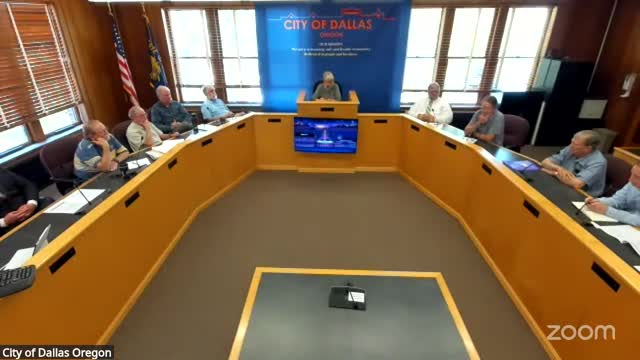Volcan Commissioner Raises Concerns Over Millersburg Station Investment Viability
July 27, 2025 | Dallas, Polk County, Oregon
This article was created by AI summarizing key points discussed. AI makes mistakes, so for full details and context, please refer to the video of the full meeting. Please report any errors so we can fix them. Report an error »

During the recent joint meeting of the Economic Development Commission (EDC) and the South Dallas Urban Renewal and Development Advisory Committee (SDURDAC) on July 27, 2025, key discussions centered around the future of rail infrastructure in the City of Dallas, Oregon. The meeting highlighted the ongoing challenges and strategic considerations regarding rail-centric developments and their implications for local economic growth.
A significant point raised was the uncertainty surrounding the viability of the rail line, with concerns about whether continued investment would yield returns. One commissioner expressed frustration over the lack of progress at the Millersburg station, which has not attracted the anticipated traffic despite substantial investments from various government levels. This sentiment reflects a broader concern about the effectiveness of the "if we build it, they will come" philosophy that has guided past infrastructure decisions.
The discussion also touched on the need for clarity regarding the future of the rail line. A commissioner urged for a definitive timeline on when the city might cease to invest in the rail infrastructure if usage does not improve. This call for a "drop-dead date" underscores the urgency for stakeholders to make informed decisions about resource allocation and infrastructure maintenance.
Additionally, the meeting addressed the importance of engaging site selectors, particularly those based in the Midwest and South, to promote the area for potential development. The ownership group emphasized their commitment to marketing the site, despite the challenges posed by transportation developments and potential expenditures from the Oregon Department of Transportation (ODOT).
In conclusion, the discussions at the joint meeting reflect a critical juncture for rail infrastructure in Dallas, Oregon. As the city grapples with the implications of its investments, the need for strategic planning and proactive engagement with potential developers remains paramount. The outcomes of these discussions will likely shape the future economic landscape of the region, as stakeholders seek to balance infrastructure maintenance with the realities of market demand.
A significant point raised was the uncertainty surrounding the viability of the rail line, with concerns about whether continued investment would yield returns. One commissioner expressed frustration over the lack of progress at the Millersburg station, which has not attracted the anticipated traffic despite substantial investments from various government levels. This sentiment reflects a broader concern about the effectiveness of the "if we build it, they will come" philosophy that has guided past infrastructure decisions.
The discussion also touched on the need for clarity regarding the future of the rail line. A commissioner urged for a definitive timeline on when the city might cease to invest in the rail infrastructure if usage does not improve. This call for a "drop-dead date" underscores the urgency for stakeholders to make informed decisions about resource allocation and infrastructure maintenance.
Additionally, the meeting addressed the importance of engaging site selectors, particularly those based in the Midwest and South, to promote the area for potential development. The ownership group emphasized their commitment to marketing the site, despite the challenges posed by transportation developments and potential expenditures from the Oregon Department of Transportation (ODOT).
In conclusion, the discussions at the joint meeting reflect a critical juncture for rail infrastructure in Dallas, Oregon. As the city grapples with the implications of its investments, the need for strategic planning and proactive engagement with potential developers remains paramount. The outcomes of these discussions will likely shape the future economic landscape of the region, as stakeholders seek to balance infrastructure maintenance with the realities of market demand.
View full meeting
This article is based on a recent meeting—watch the full video and explore the complete transcript for deeper insights into the discussion.
View full meeting
